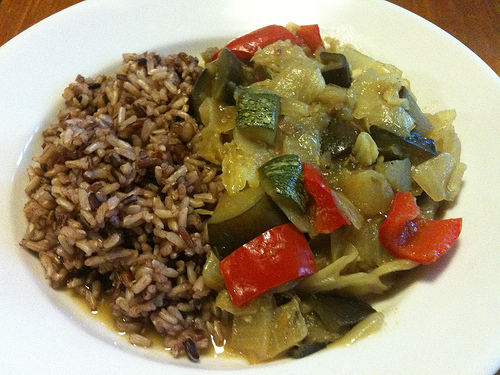Nutrition
As discovered in reading about wild rice's interactions, you know that many animals other than us rely on this aquatic grass as a source of food. But what does wild rice itself use as a source of food? The answer is in the sky.
 |
Plants, wild rice included, use the sun's light energy to convert water and carbon dioxide into sugars in a process called photosynthesis. First, they draw up the necessary water through transport tissues in their stalks called xylem. Gas exchange is made possible by holes in the leaves formed by cells called stomata. The sugars created by photosynthesis are transported throughout the plant by a vascular tissue called phloem. The resulting sugars are generally stored as starch.
|
To humans and other animals, wild rice holds a lot of nutritional value. Did you know that the grain itself is about 11% protein? The kernels are about 80% carbohydrates and 1% fat. It's also fairly low in iron but pretty high in calcium. It ranks higher than white rice and corn in magnesium, phosphorus, sodium, zinc, potassium, copper, thiamin, riboflavin, niacin, vitamin B6, and folacin (Thayer 2006). |
Image from www.flickr.com. Some rights reserved by user 305 Seahill. |
Learn about its life cycle and reproduction next!
To go back to the home page simply click the 'home' tab at the top of this page or click here
